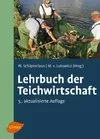
-
 Anglický jazyk
Anglický jazyk
Studies on healing and acclimatization of Chilli (Capsicum annuum L.)
Autor: Lahanu Gabhale
Chilli (Capsicum annuum L.) belongs to the family solanaceae having diploid species with 2n=2x=24 chromosomes. Chilli can be grown in tropical and subtropical regions with warm and humid climate with temperature between 20- 25 ºC. These abiotic and biotic... Viac o knihe
Na objednávku, dodanie 2-4 týždne
40.68 €
bežná cena: 45.20 €
O knihe
Chilli (Capsicum annuum L.) belongs to the family solanaceae having diploid species with 2n=2x=24 chromosomes. Chilli can be grown in tropical and subtropical regions with warm and humid climate with temperature between 20- 25 ºC. These abiotic and biotic factors damages growth as well as production in chilli. To increase the area and productivity of chilli production it is essential to mitigate these problems with desirable effects. To tackle most of biotic and abiotic stresses, grafting in chilli can be the potential solution. An average of 5 to 8 days are required for the graft union of an herbaceous plant to develop vascular connectivity between rootstock and scion. many growers and grafting researchers construct healing chambers which are economical for creating the optimum healing environment. Maintaining temperatures within the optimal range (25ºC to 28ºC) and high RH (>95%) is of primary concern while healing the vegetable grafts. Acclimatization of grafts is the major operation after the healing of those grafts and this can be done by gradually exposing the grafts to low humidity (lower than RH in healing chamber), high light intensity and temperature.
- Vydavateľstvo: LAP LAMBERT Academic Publishing
- Rok vydania: 2023
- Formát: Paperback
- Rozmer: 220 x 150 mm
- Jazyk: Anglický jazyk
- ISBN: 9786206767244

 Nemecký jazyk
Nemecký jazyk 









